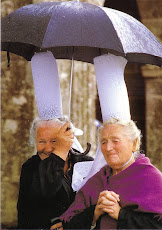Not only is the lakeside village of Huelgoat the best start for exploring the Montagnes d’Arree, it is also almost the only place in the area that has much in the way of tourist facilities. Around its spacious main square and in the surrounding streets are four small hotels (the An Triskell, tel 98.99.71.85, is good value) and several restaurants.
The name Huelgoat means ‘high wood’, and the great forests surrounding the village offer plenty of opportunities for walks along woodland paths. North of the village, giant granite rocks lie hidden among the trees; one, known as ‘la Roche Tremblante’, pivots on its base if pushed correctly; other rocks have been weathered into interesting shapes. South and west, the walks include one along the River Argent to a plunging chasm, and another along the canal that was built in the 18th C to serve the silver mining industry. Before leaving, fill your tank - filling stations are scarce on back roads of both loops.
Huelgoat to Locmaria Berrien
Take the Carhaix-Plouguer road out of Huelgoat. This is a winding road which cuts a narrow corridor through the forest before entering a wide valley.
Auberge de la Truite
This traditionally furnished restaurant on the Huelgoat-Carhaix road is reckoned to serve the best food in the area. Specialities include lobster and, not surprisingly, truite de I’auberge. Mme le Guillous’s cosy restaurant & hostelry also has six bedrooms. Tel 98.99.73.05; closed mid Jan to Apr, Sun evening and Mon (except July and Aug) ; price band C.
Locmaria Berrien to Locarn
About 4 km beyond Poullaouen, take the left turn signposted Plounevezel; soon turn left and cross the D54, signposted Ste-Catherine.
At the junction with the D787 go straight across, signposted Treffrin. At the T-junction turn right along the D20A. Once you have crossed the D54 there is the first of many long views over the undulating Breton countryside. Because traditional farming methods are still employed here, hedgerows have not been bulldozed, nor trees uprooted or cut down; the patchwork pattern of small fields and clumps of woodland remains more or less as intimate and restful as it has been for hundreds of years. At the junction with the D2o, turn left to Locarn.
Locarn
A break from driving is in order after the invigorating descent through a leafy valley before the road rises up to reach the quiet hillside village of Locarn. The views over a tributary of the Hiere merit more than momentary contemplation; the church contains some fine stained glass; and the silver reliquary of St Hernin, the i6thC cross and 17thC chalice, which are kept in the presbytery, are well worth seeing.
From Locarn take the D20, signposted St-Nicodeme, turn left (the signpost to the Gorges faces away from you) then, after about 2 km, turn left once more.
Gorges du Corone
From the small parking area, a 15-minute walk through woodland, alongside a narrow river and past big granite outcrops, brings you to the spot where the river passes under a great pile of boulders in a series of small waterfalls. The path continues, but children (and adults, no doubt) will be happy enough to stop here to clamber over the rocks. On a hot day the shade of the forest and the sound of the river are a welcome tonic for those who are starting to feel weary. You need to search around for picnic places; alternatively, the Ty-Pikouz, a small, simple auberge, just along from the car park, is an adequate place to stop for a meal or a snack.
Gorges du Corone to St Gildas
Return along the short no through road to the Gorges, then turn left and follow the signs to St-Servais (there is one unsignposted T-junction where you should turn left). At St-Servais turn left (not signposted but opposite the church) and as you climb up out of the village take the left turn to Duault. In contrast to the route from the Gorges to St-Servais, the road follows a high ridge from which you can look out over great expanses of utterly rural countryside. At Duault bear right on to the DI1I; drive on for a short while then turn left along the D787. The DI I winds gently down to the main road and the Hiere valley.
Opposite a trout farm, turn right, signposted Carnouet and Chapelle St-Gildas.
St-Gildas
The chapel, which stands at the end of an unsignposted track lined by an avenue of trees, is visible from the road. Around the roof at the rear of the 16th C building are some fearsome grotesques (one of which is enjoyably crude). Opposite the main door to the chapel and across a stile, a 5-minute walk takes you to the top of a hill from which you can enjoy the most extensive views on this loop of the tour - winds permitting, this is an ideal place to reflect on the charm of the Breton countryside
St-Gildas to Huelgoat
Return along the tree-lined track and turn left. At the T junction turn right, then turn left at the crossroads, signposted Morlaix. At the junction just past Quefforc’h, follow the signs to Huelgoat. The scenery varies almost as much as the road twists and turns; eventually you rejoin the road which leads through the dark forest back to Huelgoat.
Thursday, April 22, 2010
Subscribe to:
Post Comments (Atom)
.jpg)
.jpg)
.jpg)
![Reblog this post [with Zemanta]](http://img.zemanta.com/reblog_e.png?x-id=66a28ed9-176c-40a6-b796-d4733ec9d7f6)



No comments:
Post a Comment